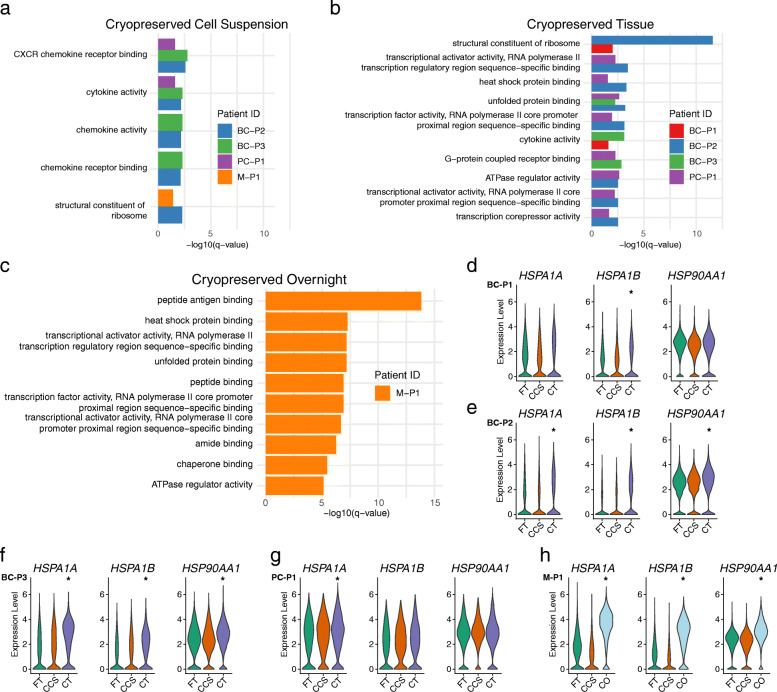Fig. 5.
Gene expression artefacts arising from cryopreservation. a–c Enrichment scores for gene ontology pathways that are unique to cryopreservation conditions: cryopreserved cell suspension (CCS; a), cryopreserved tissue (CT; b) and cryopreserved after overnight cold storage (CO; c). Comparisons were performed between all cells from each matched condition, which were first downsampled by total cell number and total number of sequencing reads. For the CCS (a) and CT (b) conditions, only pathways that were shared across multiple cases were analysed, which led to a total of 5 and 21 pathways for each condition, respectively. A total of 54 pathways were enriched in the CO (c) condition. Only the top 10 pathways based on enrichment scores are plotted for CT (b) and CO (c) conditions. DEGs from each condition (Additional file 5) were passed on to the ClusterProfiler package for functional enrichment with the CC sub-ontology under the human org.Hs.eg.db database. GO pathway descriptions can be found in Additional file 6. d–h Expression violin plots of the genes HSPA1A, HSPA1B and HSP90AA1 from cell stress response pathways (heat shock protein binding GO:0031072 and unfolded protein binding GO:0051082) that were commonly enriched across CT and CO conditions. Tumours for BC-P1 (d), BC-P2 (e), BC-P3 (f), PC-P1 (g) and M-P1 (h) are grouped by their cryopreservation conditions: fresh tissue (FT), CCS, CT or CO. Asterisk indicates significance values where adjusted p values are less than 0.05, as calculated using the MAST method

